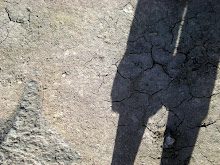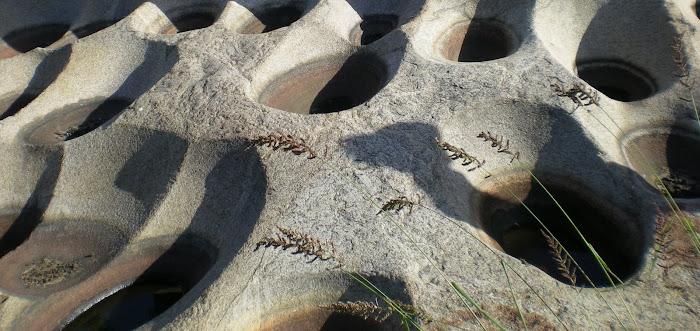I finally figured out how my alarm clock works and set the alarm-the one problem being that when it went off I didn't recognize it and spent about five minutes seething in bed, silently cursing the person who wasn't shutting off their alarm before realizing that person was me.
George and I headed off to SSRRC at around nine thirty to have a meeting with the Director Rex (I forgot his last name). This is as good a time as any to fill you in on our actual work here, rather than just stories of lizards leaping out at me in the bathroom (three times! Three times in two days!).
In a general sense, we are working on writing a draft proposal for the Global Fund Round Seven to get money for Eastern Equatoria State in Southern Sudan (I'm capitalizing in excess here, but its just to be safe). The population of EES is about one million people (we are trying to get a more exact figure through SSRRC, the census (which we probably wont get access to since it officially doesn't come out until October) and the EPI chains.) What we are aiming for is to propose one net for every two people in the entire state of Eastern Equatoria. This would have the combined effect of cutting malaria rates significantly (50-80%) since the mosquitoes that carry malaria bite from dusk till dawn, and acting as a source of vector control. If enough mosquitoes die, then you can break the chain of malaria infections. With a population of one million people, this would work out to about 500,000 nets for the state of EE, and at five dollars a net that would be about 2.5 million dollars. You also need to take into account methods of distribution, training of net construction, malaria medication (if possible) for those who need it, and a host of other things. We are also hoping to support Community-based fever management, because children under five, if they are going to die of malaria, will die within the first 48 hours, so a quick response is vital.
Net distribution can be particularly tricky. As of now, there are a whole bunch of nets stuck in Mombasa, Kenya because someone ticked off the wrong thing when they arrived. There are other surplus nets held up in other parts of the country, and any big supply of nets risks that kind of hold up. Additionally, mass distribution campaigns are expensive, because transportation is expensive. Cars here are very valuable and often difficult to come by in sufficient numbers. Paying staff, filling up the cars tanks and fixing them when they break, organizing distribution centers in the various different towns and making sure that the nets get to the rural areas, all complicate the matter. There is also a cultural aspect. Our data on this is a bit mixed, but it seems that in some areas there is a reluctance by the people to commit to paper their names and the number of children they have. This information is pretty crucial to deciding who gets nets, and how many. Asking people to write down their names and the size of their households is called pre-registration, and it is a contentious issue in relation to distribution. Some people think we should just tell villages-On this day we are showing up with nets- and people will come, and some (such as international agencies which like to know exactly what is going where) insist on pre-registration as necessary to success and total coverage. (This is a lot how people in the US out west don't like to talk about how much cattle they own. It stems partly from suspicion and partly from a desire to protect one's wealth (or lack of wealth).
The Diocese of Torit is in a particularly strong position to offer coverage on the scale we are applying for. No single state in Sudan has ever been entirely swamped with nets before, and if we achieved it, it would be a huge success, not only for the Government of Southern Sudan (GOSS) and the Diocese of Torit, but also for the people in Eastern Equatoria. Malaria is a visible and incredibly large problem here, and to be able to visibly cut rates of malarial deaths will reinforce trust and boost moral, as well as thousands, if not hundreds of thousands of lives. In Ethiopia and Rwanda, the governments managed to offer coverage to the entire country. Rwanda has one of the densest populations in Africa and very good infrastructure so it isn't really an analogous comparison to Sudan, but Ethiopia is somewhat similar and can be used as a model to base our proposal on. There, they managed to cut death rates by 80%, but they have paved roads and infrastructure that we don't have so I don't think we can hope for a success rate that high. Nevertheless, its a good model.
The Diocese of Torit is particularly trusted because unlike other NGOs that come and go, the Diocese is clearly not going anywhere. People perceive the NGOs as leaving when things get hard, and this may or may not be true, but the Diocese has built up an intense loyalty and trust with the people that will be extremely helpful to distribution efforts. We are hoping to perhaps partner up with Malaria Consortium, in order to gain the credibility of their strength as an NGO and their ability to maneuver bureaucracy. We could also help them by making distribution an easier process, and offering them the relationship that we have with the people in Eastern Equatoria and our ability to have success.
The first steps that we have been taking are to get good research. We are waiting for the RFP to come out (Request for Proposal) also called an RFA (Request for Application) which is coming out at an indeterminate time. We are researching in three areas. Neesha is looking at the Global Fund: checking its guidelines, looking for previous applications dealing with malaria, finding a write up of the Ethiopian success story, looking for annexes, etc. I am examining the Eastern Equatoria State. I'm meeting with ministers of health for the state, and looking at the government website. I'm gathering data from places like SSRRC which break down the state into county, payam, boma and village which not only gives a better measure of population, but offers ideas as to where we need to get the nets and the best places to distribute them. As we are trying to get the government's support of our proposal, I'm also getting a good idea of the various government programs being implemented (both on malaria and guinea worm) and the approaches they take towards malaria control. George is working within the Diocese itself. He is getting stats of staff numbers, numbers of patient visits in Diocese hospitals, salaries, number of vehicles, distribution programs previously run by the Diocese, etc. In many ways he is assessing our ability to carry out the plans if we successfully get the money. He is also working on mapping coordination, by figuring out distances and locations of villages, and finding long/lat stats for Google Earth, the government, and any NGOS or vaccine trails that need them.
We aren't just doing nets though. Medicine and community based fever management are also integral to our project. We are looking to control all aspects of malaria, from prevention to treatment, in the state. ACTs (artemisin combined therapy) is the first line way to treat malaria right now in Sudan. It has a very low resistance rate (if not non existent) and it is ultimately more cost effective than chloroquine (which has a very high resistance rate in SS) and SP (sulphuric somethingorother) which has a lower resistance rate but induces resistance very quickly. Treatments for pregnant women are also being established, to provide them with protection while their resistance is low, and pregnant women and children under five are in particular being targeted.
Additionally, there is money from the World Bank dealing with diarrhea, water contamination, and cholera which provides emergency funds to deal with problems of that nature. There is an application that we are going to get from the MOH and if we fit the criteria (we might not) we can get money to deal with that.
This is all I can remember right now. On Saturday we are going to see a mass distribution (and hopefully help) of non-food items in a town that was burned to the ground by the SPLA with the director of the SSRRC. This is an incredible opportunity to see a distribution in action, and to help people who, without these packages we are handing out, would die of the elements. This will help to slowly get them back on their feet. On Tuesday, Father Vuny has been invited to speak on how Youth, Women and the Church aid in peace building, and as part of his talk I'm going to prepare something about how treated nets can bring peace and offer more stability.
I'll update you as we go. These are just the basics. But this is really helping me learn how to navigate bureaucracy, make connections, understand the nuances of getting what you are hoping to get, and writing grant proposals that go to international institutions. It also illustrates the politics of distribution and how to successfully hold a massive campaign of one, and is a way to get a taste of public health works and have the chance to really affect one million people. Its the best internship I've ever had.
Subscribe to:
Post Comments (Atom)



2 comments:
it sounds very interesting and complex,and, frankly, a little intimidating. but you sound like you are enjoying it.
best internship youve ever had...what other internships did you do?
Oh My God. Who are you? This is amazing, truly. One moment, I am reading classic madcap Emma narrative of life whereever she happens to be and then it is like - Voila; Instant Aid Professional. You are really something! You really are!
Lots of love,
/dad
Post a Comment